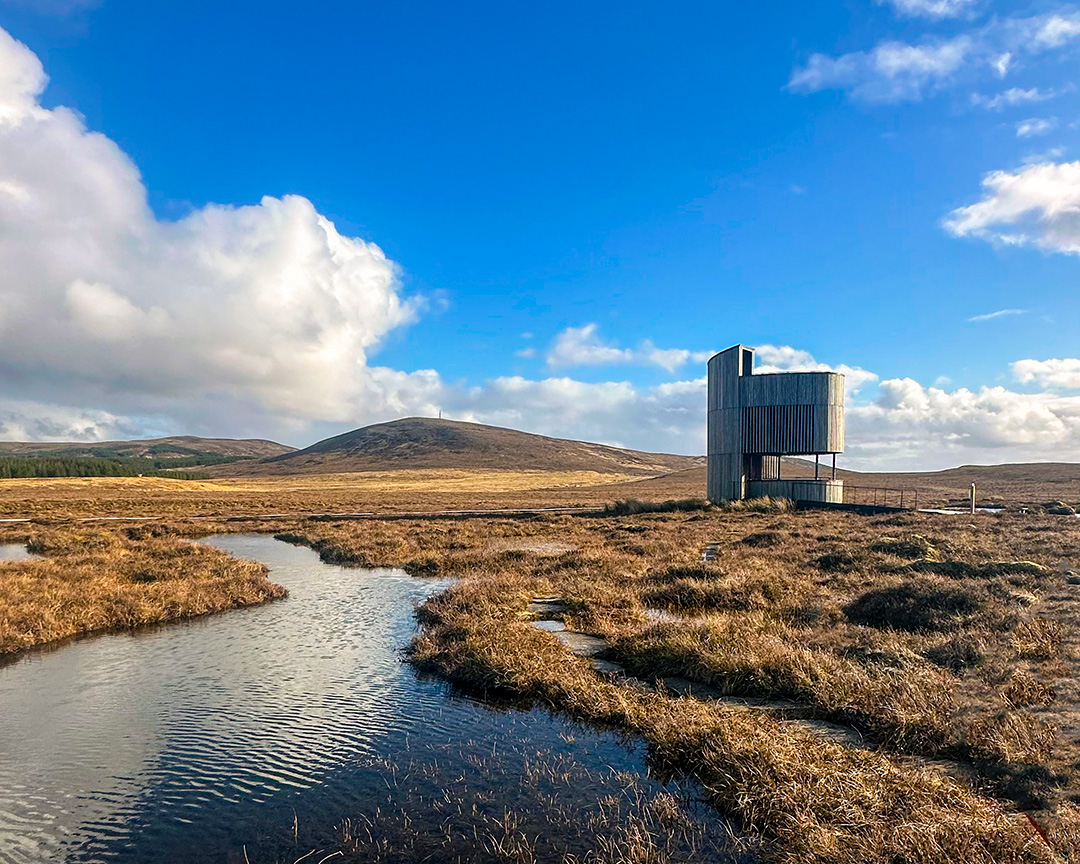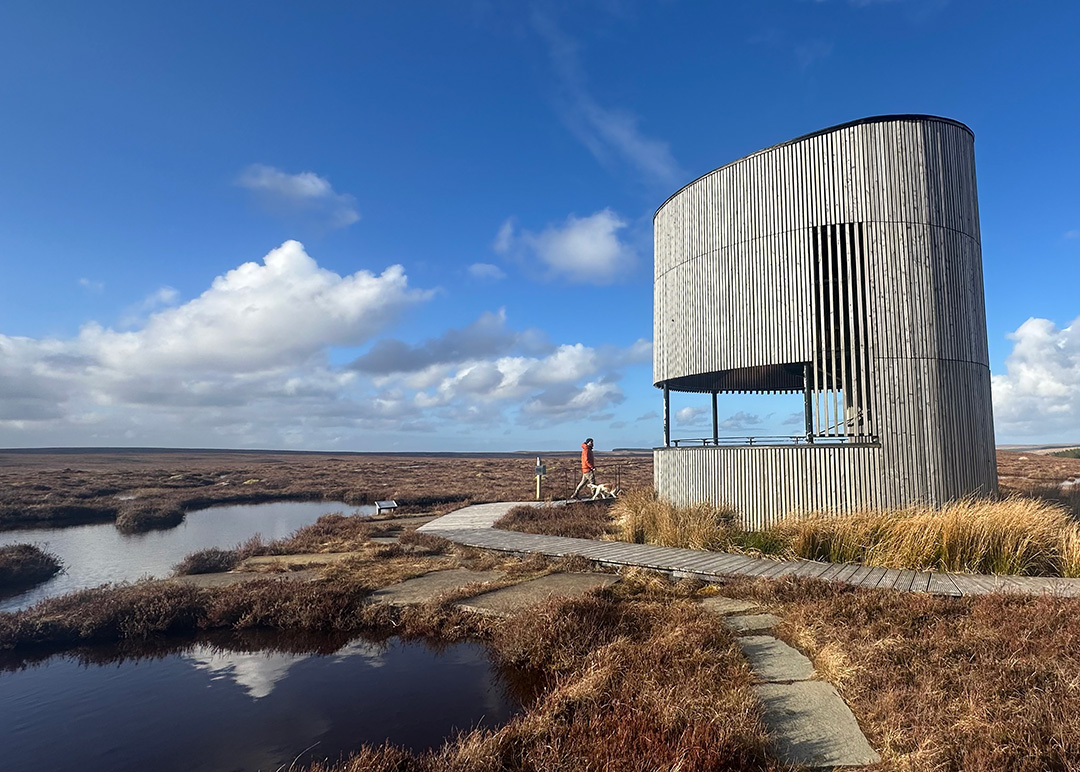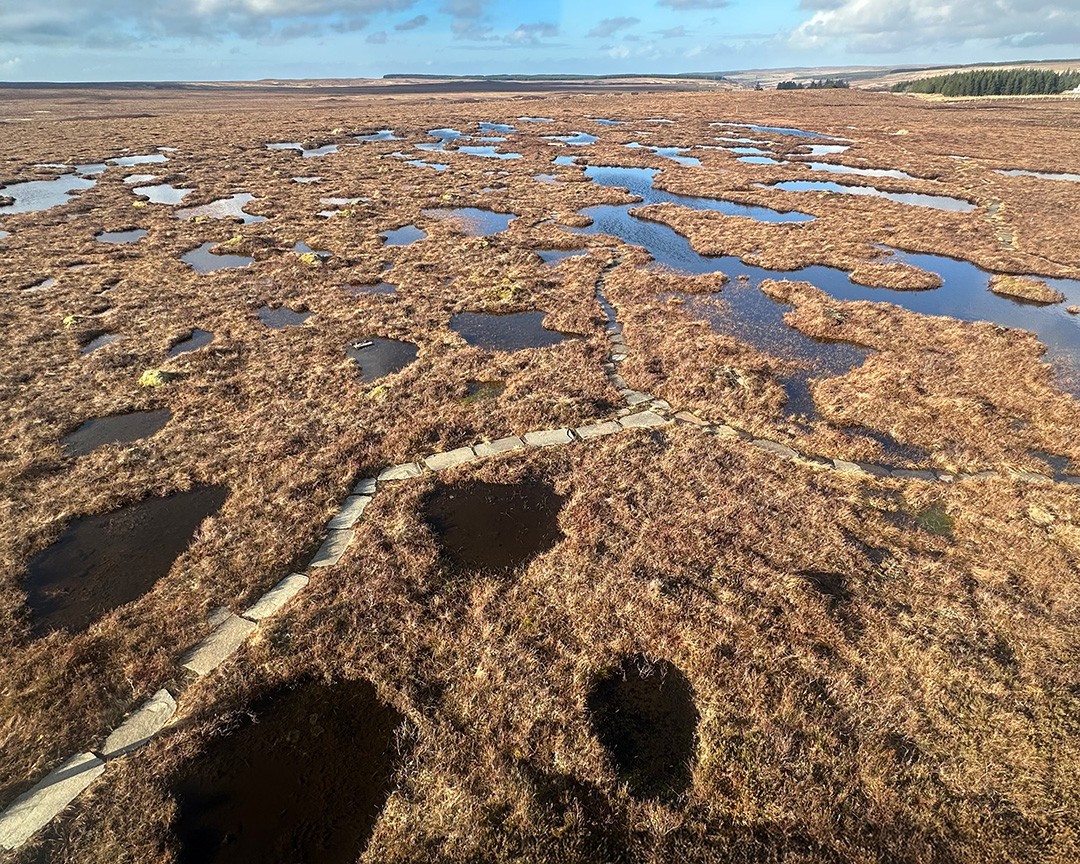A very rare type of peatland, the Flow Country is the most extensive blanket bog system in the world. Made up of a series of 400,000 hectares of peat bogs and pools, the bog has been growing for more than 10,000 years. It is also spectacular. Here is how to visit the Flow Country.

So, why should I visit a peat bog?
Did you know that in Scots that the word ‘flow’ means ‘bog’?
Located in the far north of Scotland, the Flow Country is the first and only area of peatland designated as a World Heritage Site in the world by UNESCO. Made up of a series of 400,000 hectares of peat bogs and pools and is the most intact blanket bog system in the world.
The Flow Country is also a stunningly beautiful place to visit, home to plants and wildlife such as merlin, golden plover, buzzards and hen harriers. One of the most prevalent plant species of the Flow Country is sphagnum moss which helps the peat bog store all its water.
> Did you know that the Flow Country is only one of three UNESCO world heritage sites in the UK which protect natural landscapes? The other are the Giants Causeway in County Antrim and the Jurassic Coast in Dorset.
Where is the Flow Country?
The Flow Country covers 10,000 hectares and stretches from the region of Caithness to Sutherland in the far north of Scotland.
How do I visit The Flow Country?
The best spot to visit the Flow Country is at the RSPB Forsinard Flows Visitor Centre which is located on the A897 at Forsinard (KW13 6YT) halfway between Helmsdale on the east coast and Melvich on the far north coast. The RSPB own around 20km2 of the bog system, protecting it for wildlife and opening up the area for visitors.
There are lots of walks to explore the Flow Country. At Foisinard:
- Dubh-Lochain trail (1.6km) – The best way to see the bogs is to walk the boardwalks of the Dubh-lochain trail (1 mile) to the fabulous Flows Lookout Tower where you get a 360 degree view of the bog (Start at the RSPB Scotland car park, near Forsinard)
- Forsinain Trail (6.5km) – A varied walk through farmland, hills, and peatland, offering views of birds like golden plover and dunlin and is a longer introduction to the bog, hike the Forsinain trail (Start at the RSPB Scotland car park, near Forsinard)
Further afield:
- Loch a’Mhuilinn Walk (1.6km) – A short walk to a loch passing former peat cutting areas. Start at the small car park near Talmine.
- Strathy Pools Walk (3.2km) – A track leading to panoramic views over North Sutherland’s Flow Country. Start at the parking space outside Strathy village.
- Munsary Reserve (9.5km) – A 6-mile return walk through heathland and wetlands, managed by Plantlife Scotland. Start at the signposted track near Lybster.
- Flows of Leanas (Camster Wind Farm) (6km) – A circular route offering views of peatland restoration. Start near the Grey Cairns of Camster, on the road to Wick.

What is Peat?
Peat is a super rich and very dark type of soil that once formed in the country’s wetland areas, where plant material like moss and grasses slowly breaks down in waterlogged conditions. The process of peat forming is incredibly slow, which means that peat can accumulate over thousands of years.
Peat is a unique feature of both Scotland’s landscape and history. Peat has been used for centuries in Scotland from burning for fuel to giving whisky its distinct smoky flavour – particularly on the Isle of Islay where peat is used to smoke the grains.

Why are peat bogs important for climate change?
In Scotland’s peat bogs, the plant material doesn’t decompose fully because of the lack of oxygen, resulting in a a very carbon-rich soil. This makes peatlands vital for storing and sequestering carbon into the ground.
However, peatlands are fragile environments, and when disturbed, they can release that stored carbon, contributing to climate change.
For this reason, many of Scotland’s peat bogs are now being restored – and its just why the Flow Country is so important worldwide.
Where else can I visit a peat bog in Scotland?
- Flanders Moss National Nature Reserve: one of the largest lowland raised bogs in the UK, Flanders Moss located near Stirling is ecologically significant, home to a variety of plant species and birds, and is also a key site for peatland restoration efforts. It is thought that Flanders Moss holds 3 million tonnes of carbon. Visit Flanders Moss National Nature Reserve
- Blawhorn Moss: one of Scotland’s most accessible areas of blanket bog, Blawhorn Moss is located in West Lothian. Visit Blawhorn Moss.
Love from Scotland x
> Find out more about the Flow Country
> How to visit Caithness
> How to visit Sutherland
